
http://www.iaeme.com/IJM/index.asp
188
editor@iaeme.com
International Journal of Management (IJM)
Volume 8, Issue 1, January – February 2017, pp.188–195, Article ID: IJM_08_01_022
Available online at
http://www.iaeme.com/ijm/issues.asp?JType=IJM&VType=8&IType=1
Journal Impact Factor (2016): 8.1920 (Calculated by GISI) www.jifactor.com
ISSN Print: 0976-6502 and ISSN Online: 0976-6510
© IAEME Publication
INNER SELF-IMPROVEMENT PROGRAMS:
PATHWAY TO GAIN INDEPENDENCE FROM THE
DEPENDENCE OF ALCOHOL
J. B. Singh
Research Scholar, Faculty of Management Studies,
Pacific Academy of Higher Education and Research University, Udaipur, India
Dr. Artee Aggarwal
Amity University, India
ABSTRACT
The use of alcohol by mankind has been reported throughout history in most civilizations. The
social approval to alcohol use has varied from strong disapproval to being actively encouraged.
Research has contributed substantially to our understanding of the relation of drinking to specific
disorders and it has been proclaimed that alcohol consumption works as a catalyst to human health
deterioration. In India, alcohol dependence have been recognized to have a significant impact on
public health and in different facets of life only very recently. There are various practices and
measures adopted by the government and NGOs to control the consumption of alcohol and get
riddance from its addiction. However, these policies have been unsatisfactory to stop the excessive
use of alcohol. The current review paper thus intends to analyze the effectiveness of self-
improvement programs that focus on reducing alcoholism in the society. The best initiative that can
be taken against this war with substance use would be to motivate and encourage people to stop
abusing and exploiting the consumption of alcohol, and that would be possible only if people are
aware of the side effects of this beverage. This paper proposes the dire need to consider alcohol
dependence as a social determinant of health and implement strict laws that can spread awareness
of alcoholic abuse among illiterate people to stop the substance exploitation.
Key words: Alcohol dependence, alcohol consumption, self-improvement programs
Cite this Article: J. B. Singh and Dr. Artee Aggarwal, Inner Self-Improvement Programs: Pathway
to Gain Independence from the Dependence of Alcohol. International Journal of Management,
8(1), 2017, pp. 188–195. http://www.iaeme.com/IJM/issues.asp?JType=IJM&VType=8&IType=1
1. INTRODUCTION
The intake of alcohol has been considered as a determinant for the degradation of human health since its
inception. The alcohol beverages have been consumed by human societies since antiquity. For thousands
of years, drinking alcohol has been a convention that is adopted by many cultures all over the world
(McGovern, 2009). There is no doubt that the abuse of alcohol consumption affects not only physical
health but mental stability of the consumer also; even the manufacturers can't deny this fact. It's intake

Inner Self-Improvement Programs: Pathway to Gain Independence from the Dependence of Alcohol
http://www.iaeme.com/IJM/index.asp 189 editor@iaeme.com
around the world is only increasing irrespective of its social and economic impacts. The consumption of
alcohol can be influenced by various factors that can be age, gender, genetics, social surroundings,
economic stability, culture and accessibility (Room et al., 2002). According to the report by Organization
for Economic Cooperation and Development (OECD) in may 2015, the alcoholic consumption in India has
increased by 55% from 1992 to 2012. It is estimated that the abuse of alcoholic intake has been the fifth
leading cause of death worldwide. The alcohol consumption has resulted in approximately 3.3 million
deaths each year (WHO Global Status Report on Alcohol and health, 2014).
There are an ample number of reasons that can accelerate the dependency of consumers on alcohol;
reasons that give rise to alcohol addicts. Such reasons can range from mixing up and relaxing among
strangers in a social event to making the social bond stronger among two people, to find alcohol tasty, to
reduce stress caused by hardships of life, to look 'cool' or to like the feeling of intoxication (Freeman,
2006). There are also some cultures in which it is expected from people to drink. Also, it can depend upon
the family history of alcoholism (Sayette, 1999). Various researchers have tried to understand the relation
of drinking to health disorders and its impact on the society. The increasing consumption of alcohol calls
for appropriate policies and measures that need to be undertaken to prevent this damage and control the
intake of alcoholic beverages (Das, et al., 2006).
This review provides background to questions such as why people consume alcohol and what leads
them to become alcohol-addict. It then recognizes the problems and disorders associated with alcohol
consumption and looks at health impacts as well as social and psychological impacts. This study points to
certain practices and policies deployed by the government and NGOs about alcohol prevention and what
other measures can be taken to prevent its use. It is then analyzed that how such recommendations are
relevant for India.
2. LITERATURE REVIEW
2.1. Alcohol Consumption and Dependence in India
Alcohol has been consumed in India for centuries. According to WHO, in India, about 30% of people are
the consumers of alcohol. The average age of people when they initiate the use of alcohol was 17 years in
2007. Up to 13% of people in India are daily consumers and are referred to as addicts. Around 25% of road
accidents have been registered as drink and driving cases. This abuse of alcohol has been a significant risk
factor in terms of health and violence. As mentioned earlier, the pattern with which alcohol is consumed
can depend on various factors such as age, culture, education, social and economic characteristics. In the
last 20 years, there has been a substantial change in the usage of alcoholic beverages among different
cultures and societies (Room et al., 2002). The role of alcohol consumption has been highlighted in several
Indian mythological and religious books. From occasional and cultural use, the pattern of drinking has
moved on to being a social event.
It has been estimated that alcohol consumption in India has witnessed an increase of 106.7% in the per
capita consumption from 1970 to 1995. Around 62.5 million people are believed to be alcohol consumers,
occasional or regular. Apart from that, India has become one of the largest producers of alcohol in the
South-East Asia. It produces 65% of the alcoholic beverages. The most common reason in today's era for
this consumption is 'to get drunk' (Mohan et al., 2001). Excessive drinking among people has raised
concerns about their health and well-being (Saxena, 1999).
Several types of research have been conducted to analyse the consumption of alcohol in different
regions of India. It has been evaluated that the poor and uneducated people residing in southern India have
a higher prevalence of consuming alcohol (Chakravarthy,1990). In central, north and north-east India, the
prevalence of alcohol consumption is 20-38% in males, 10% in females and between 19.6 and 27.8% in
elderly people (Mohan et al., 2001). Also, among these elderly people, approximately 84% of them are
heavy drinkers. Fathima, 2012 conducted a research on alcohol consumption among adult males in
villages. It was found that prevalence of alcohol utilization was 33% among males in which 14.5% were

J. B. Singh and Dr. Artee Aggarwal
http://www.iaeme.com/IJM/index.asp 190 editor@iaeme.com
dependable on alcohol. 58% of the male adults were lead to drink under peer pressure. Bhagabati et al.,
2013 conducted a research on alcohol consumption in underage population and it was concluded that
22.2% of the students were drinking alcohol. They emphasised on this issue of underage drinking that
needs to be considered by policy makers. The alcohol dependency behavior is depicted on some specific
features showed by the consumer. These features can be increased tolerance towards alcohol consumption,
cravings for more alcoholic beverages, withdrawal symptoms and rigid and regular pattern of
consumption. The dependence on alcohol is developed as the consumer perceives drinking as a pleasurable
activity where non-drinking turns into a distressful event (Marshall, J. 2009).
It can be inferred from the above studies that approximately 60% of adults were completely abstinent
from alcohol.
2.2. The Problems and Disorders Associated with Alcohol Consumption
Fathima 2012 stated that 40% of male adults in a village of Banglore were abusing the use of alcohol that
was harmful. The consumption was associated with domestic violence, illness, financial and economic
difficulties. The disorders and problems that are associated with alcohol consumption are reflected in the
volume of consumption by an individual as well as the patterns of drinking (Rehm J, et al., 1996; Rehm J,
et al., 2003). Such patterns can be regular consumption of alcohol, or irregular heavy drinking or cultural
and occasional drinking. The patterns of drinking can result in injuries due to violent behavior (Greenfield,
2001) and also cause chronic diseases like coronary heart disease due to cardiac problems (Puddey et al.,
1999). The excessive consumption of alcohol ( however, there is no fixed dosage) increases the chances of
liver damage and causes diseases like cirrhosis (Day, 2000). There has been an increase of risk of having
breast cancer if the average volumes of alcohol consumption are increased (Ellison et al., 2001). Several
studies have discovered that the drinkers that are dependent on alcohol have high chances of getting
infected with coronary heart diseases as compared to those who do not drink alcohol (McElduff and
Dobson, 1997). Alcohol is considered to be one of the main factors that initiates end-stage liver
malfunctions. Such liver diseases are found common amongst alcohol addicts who consume excessive
amounts of alcohol (Mandayam, 2004). Other than this deterioration of health, alcoholism is also
responsible for intentional injuries due to violent behavior among drinkers. There are several cases of drink
and drive where innocent people have been victimised (Graham and West, 2001). Motor vehicle accidents
are the most common ones who have caused nearly 50000 deaths annually. Alcoholism is considered to be
as a risk factor in spreading HIV infection as it can interfere with decision-making. Therefore, it is
associated with high-risk behavior that can be due to drinking patterns or personality variables (Vijayanath,
V. 2011).
2.3. Inner Self Improvement Programmes to Gain Independence from Alcohol Dependence
Detoxification is the first step taken towards the path of independence from alcohol addiction. It is the
process of eliminating the toxic and addictive substances from the body. In detoxification, the intake of
alcohol is ceased while subscribing a substitute medicine to subdue the effects of alcohol. There are many
de-addiction centers in different parts of the country. These centers treat the addicted people with
detoxification methods and other medical procedures (Manickam, 1994).
2.3.1. Disulfiram Therapy
Disulfiram acts as a deterrent and delays the drinking ability of an alcohol-dependent individual. It is used
as a treatment for alcohol dependence since the 1940s and is also stated the first FDA-approved medication
for the same (Petrakis, et al., 2006; De Sousa, 2010). The process of disulfiram is initiated by inducing the
enzyme acetaldehyde dehydrogenase (ALDH) which produces an acute sensitivity to alcohol. The alcohol
in the body is converted into acetaldehyde which is then reduced into dehydrogenase and if alcohol is
consumed, the acetaldehyde in blood gives rise to various manifestations of disulfiram alcohol reaction
(DER) causing unpleasant effects (Larsen, 1948). Disulfiram is a process which should be started along

Inner Self-Improvement Programs: Pathway to Gain Independence from the Dependence of Alcohol
http://www.iaeme.com/IJM/index.asp 191 editor@iaeme.com
with supportive and psychotherapeutic interventions for the best results or else the efforts to get rid of
alcoholism will be diluted. Also, disulfiram should be started after detoxification from alcohol is
completed and the patient is free of alcohol (Krampe and Ehrenreich, 2010).
2.3.2. Behavioral Treatment Approaches
Behavioral treatment approaches comprise of various techniques formed on the basis of behavioral
principals to facilitate a healthy behavior change. These approaches comprise of training for coping
mechanisms, relapse prevention, brief behavioral interventions, self-changing approaches and family
behavioral treatments. There are counselling centers for those people who abuse the alcohol use. They
consist of psychologists and social workers who visit the families of addicted people and relapsed persons.
Further, motivation programs and behavioral approaches are conducted to encourage people who are
intensively dependable on alcohol (Witkiewitz and Marlatt 2011).
2.3.3. Aversion Therapy
Various aversion techniques have been developed and implemented to treat alcoholism, excessive eating,
compulsive behaviors, sexual deviations, and other problems. It is a psychological treatment in which the
patient is subjected to discomfort while inducing stimulus such as electric shocks to stop the addictive
behavior. To treat alcoholism, noxious stimulus is employed such as emetic that leads to vomiting. They
are termed as the chemical aversion therapies where the goal is to pair the consumption of alcoholic
beverages with drug-induced nausea (Elkins, 1975). The patients are given alcohol to drink first and then
are injected with emetine which causes vomiting within a short span of time. The patients associate the
sight, smell and taste of alcohol consumption with the vomiting, and this creates an aversion towards the
alcohol. Rachman (1965) stated that the use of electric shocks as an aversion therapy can be more
effective. The aversive shock removes the possibility of drug side effects in the chemical aversion therapy.
2.3.4. Anti-Craving Medications in The Treatment of Alcoholism
The individuals that are dependent on alcohol usually experience 'craving' when they are isolated from
alcohol consumption. To stop these cravings, effective medications can be induced. Acomprosate and
Naltrexone are such drugs that work best in anti-craving medications. Acamprosate is a derivative of the
essential taurine amino acid, and when injected to an alcohol addict, it enhances the GABAergic
neurotransmitter system. The GABA ergic neurotransmitter system is reduced in persons that are exposed
to alcohol. Acamprosate interfaces and acts on the calcium channels and reduces central nervous system
hyper excitability caused by cessation of alcohol intake. It decreases the cravings that are related to the
withdrawal symptoms (Annemans, et al., 2000). Naltrexone drug is used to dilute the effects of
endogenous opioids in bodies of those who are heavy drinkers. The alcohol consumption increases the
effects of endogenous opioids which leads to withdrawal syndrome. Naltrexone blocks these receptors and
reduces the cravings for alcohol beverages. It is efficient when used along with psychosocial interventions
(Carmen, et. al., 2004).
2.3.5. Government Policies
Several prevention policies have been deployed by the government where the idea is to prohibit the
consumption of alcohol. The rules and restrictions are different in different states. Public awareness
programs are launched to educate people about the harms and social impacts of consuming alcohols and
substance use. The Ministry of Social Justice & Empowerment has been deploying schemes and
mechanisms for Prohibition and Drug Abuse Prevention since the year 1985-86. The main focus is on
implementing programmes for reducing the demand for drugs and alcohol use in the country (Saxena,
2000). The organization works with an objective to facilitate the support of families and friends in the
treatment of the patients and create such facilities and centers that are able to achieve a drug-free
environment. These Centres adopt a wide variety of approaches, systems and methodologies for treatment
and rehabilitation of the addicts suitable and adaptable to the social customs, traditions and culture.

J. B. Singh and Dr. Artee Aggarwal
http://www.iaeme.com/IJM/index.asp 192 editor@iaeme.com
However, this does not in any way undermine adoption of scientific, modern and established systems of
treatment.
2.3.5.1. Major initiatives on alcohol policies
1. National Policy for Drug Demand Reduction: It was implemented in 2014 that aims to achieve the
following goals: Education & Awareness Building, Capacity Building & Training, Treatment and
Rehabilitation and Treatment and Rehabilitation. This policy seeks to approach all the health and social
effects on a victim of substance abuse, to evaluate the depth of such drugs and work on getting riddance
from its consumption. The effort for reducing drug abuse in India is of paramount importance, and this
policy is an attempt to overcome this social issue (The Ministry of Social Justice and Empowerment,
2014).
2. Joint Working Group on Rationalization of Excise Policy and Taxation: In December 2001, The Central
Government Nodal Agency on Alcohol Policy in India initiated a joint working group on the
rationalization of excise policy and taxation that was deployed in all the States and Union Territories in the
country (W. H.O 2005). This act incorporated a Model Excise Policy and Act to prohibit and prevent the
use the alcoholism. The Excise Policy for the year 2008-09 was initiated to tax and regulate the sale of
alcohol in the country as per the Prohibition Policy on the Constitution of India under Article 47.
3. Draft National Policy on Substance Use (Alcohol & Drugs): In February 2009, a National Policy on
Substance use was formulated by The Ministry of Social Justice and Empowerment and a draft was created
which awaits final approval of the Government.
4. Developing a National Strategy to Reduce the Harmful Use of Alcohol in tune with the WHO Global
Strategy: In 2010, The Ministry of Social Justice & Empowerment and the Govt. of India organized a one
day workshop on ' Developing a National Strategy to Reduce the Harmful Use of Alcohol in Tune with the
WHO Global Strategy' at New Delhi. Several instructions with regard to the 10 Policy Options and
Interventions were reviewed and accepted. As Alcohol being a State Subject, it was decided to take it
further to State levels.
3. METHODS
The study follows a review of the previously conducted empirical studies on the dependence of alcohol in
India. A rigorous comparison of various studies was aimed to bring forward the factors that seemingly
leads to alcohol dependence, along with recognizing the disorders associated with alcohol consumption
and the role of self-improvement programs for achieving independence from alcoholism. The paper uses a
descriptive research design since secondary data sources have been used to arrive at the analysis of the
findings and draw further conclusions.
4. FINDINGS
It can be inferred from the literature review that even after deploying various strategies and self-
improvement programs, there is no distinct change in the consumption of alcohol. The studies indicate that
the alcohol consumption rate among men is much higher than women and mostly poor and uneducated
people are more alcohol addicts. If there was 1 in a 300 who was a drinker, then now there is 1 in a 20 who
drinks alcohol. It has been observed that 14 million people in India are dependent on alcohol and involved
with hazardous drinking. The literature has shown evidence that the uneducated people in India are more
inclined towards drinking, and the reason is their lack of knowledge and education. Also, alcohol use has
emerged as a socially acceptable identity among people. Though, there are several policies and acts to
prevent and control the consumption of alcohol; they are not that efficient to bring notable change in the
country. The rules and laws are either not followed or not applied in the midst of bribe and corruption. As
studied from secondary data sources, there are various possible factors estimated that have contributed to
the failure of policy and programmes. One of the major factors is the lack of strictness of the laws to enact
alcohol policies and prevention. There is an absence of a rational and scientific alcohol control policy



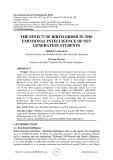
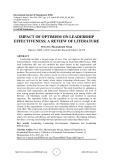
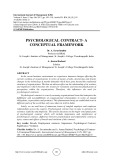

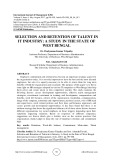

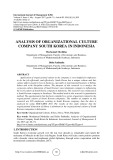



![Câu hỏi ôn tập Tâm lý học quản lý [chuẩn nhất]](https://cdn.tailieu.vn/images/document/thumbnail/2025/20251125/hathunguyen04er@gmail.com/135x160/25191764124376.jpg)
![Cẩm nang chăm sóc và nuôi dạy trẻ tăng động giảm chú ý [chuẩn nhất]](https://cdn.tailieu.vn/images/document/thumbnail/2025/20251118/kimphuong1001/135x160/4241763431998.jpg)


![Sổ tay Hướng dẫn tự chăm sóc trầm cảm [chuẩn nhất]](https://cdn.tailieu.vn/images/document/thumbnail/2025/20251029/kimphuong1001/135x160/3711761720335.jpg)
![Đề cương Tâm lý học xã hội [chuẩn nhất]](https://cdn.tailieu.vn/images/document/thumbnail/2025/20251028/c.dat0606@gmail.com/135x160/99271761707421.jpg)
![Câu hỏi ôn thi Nhập môn khoa học nhận thức [chuẩn nhất]](https://cdn.tailieu.vn/images/document/thumbnail/2025/20251021/aduc03712@gmail.com/135x160/48471761019872.jpg)

![Đề cương môn Tâm lý học sinh tiểu học [chuẩn nhất]](https://cdn.tailieu.vn/images/document/thumbnail/2025/20251007/kimphuong1001/135x160/51781759830425.jpg)



![Tâm lí học lứa tuổi và sư phạm ở tiểu học: Bài thuyết trình [chuẩn nhất]](https://cdn.tailieu.vn/images/document/thumbnail/2025/20250918/vuhoaithuong14@gmail.com/135x160/90941758161117.jpg)
